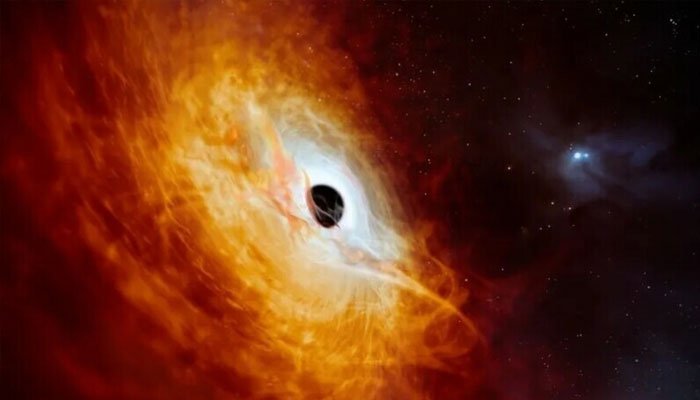Astronomers Illuminate the Universe’s Brightest Beacon: The Discovery of J0529-4351.
What do scientists say about this new brightest-ever black hole? In a monumental celestial discovery, astronomers have unveiled the most luminous object ever detected in space, casting a brilliant glow across the cosmos. With the aid of the cutting-edge Very Large Telescope in Chile, researchers have identified a remarkable quasar, serving as the radiant heart of a colossal galaxy housing an immense black hole, a staggering 17 billion times the mass of our Sun.
This celestial behemoth, named J0529-4351, has captured the attention of scientists worldwide, offering a glimpse into the awe-inspiring depths of the universe. While the quasar was initially detected years ago, its extraordinary details have only recently been unveiled through meticulous study and analysis.
Christian Wolf of the Australian National University (ANU), expressing the significance of this cosmic revelation, remarked, “We have discovered an object which has previously not been recognized for what it is; it’s been staring into our eyes for many years because it’s been glowing at its brightness for longer than humankind has probably existed.” This revelation marks a pivotal moment in our understanding of the cosmos, shedding light on a celestial spectacle that has captivated astronomers for generations.
More From FactFile: Inexpensive, Carbon-Neutral Biofuels: A Reality Achieved
The quasar’s luminosity is fueled by the voracious appetite of its colossal black hole, devouring matter equivalent to the mass of our Sun on a daily basis. Its brilliance, radiating across vast cosmic distances, serves as a testament to the remarkable forces at play within the depths of space.
The light emitted by J0529-4351 embarked on a momentous journey, spanning approximately 12 billion years before reaching our detectors. This illuminating revelation offers a window into the distant past, unraveling the mysteries of our universe’s ancient history.

























